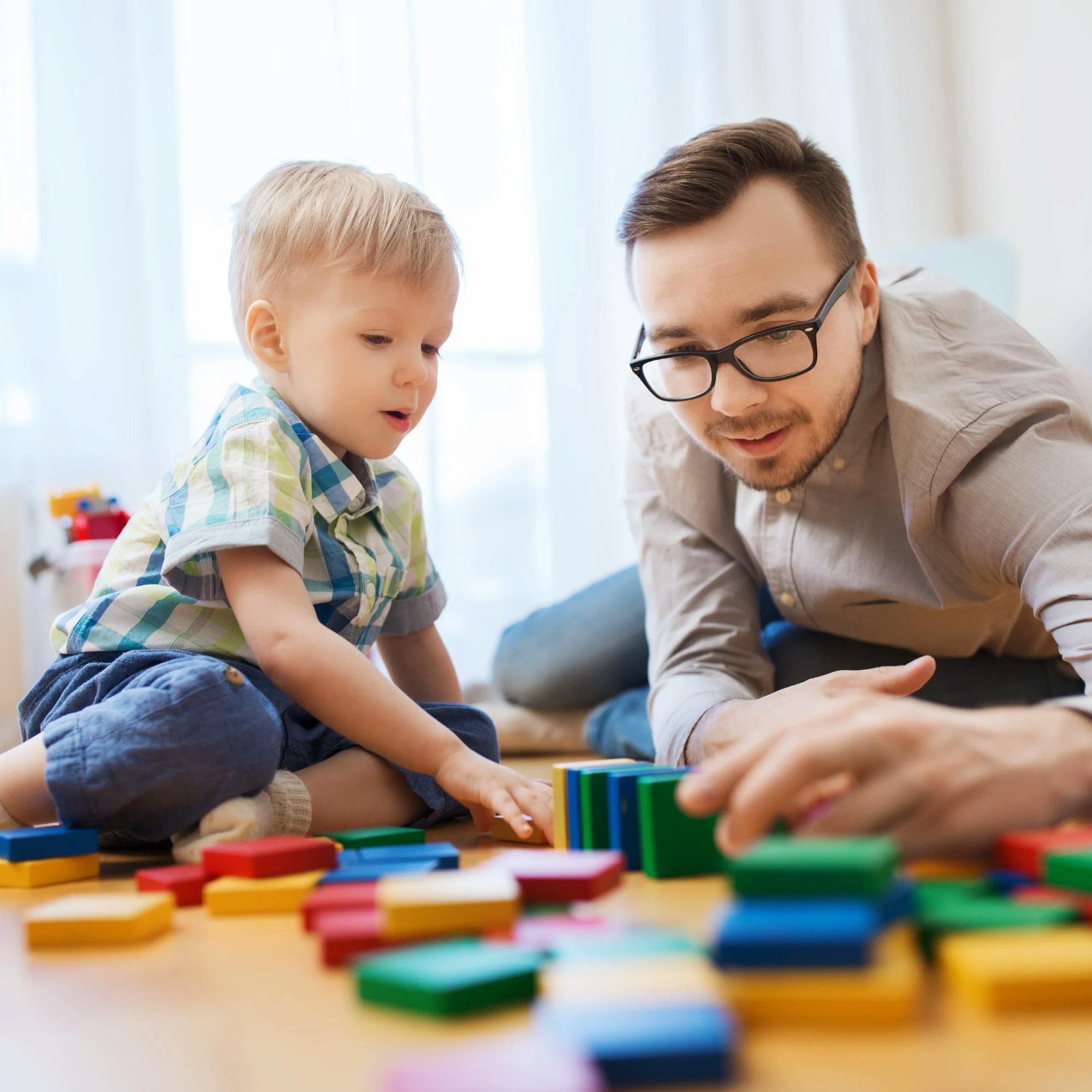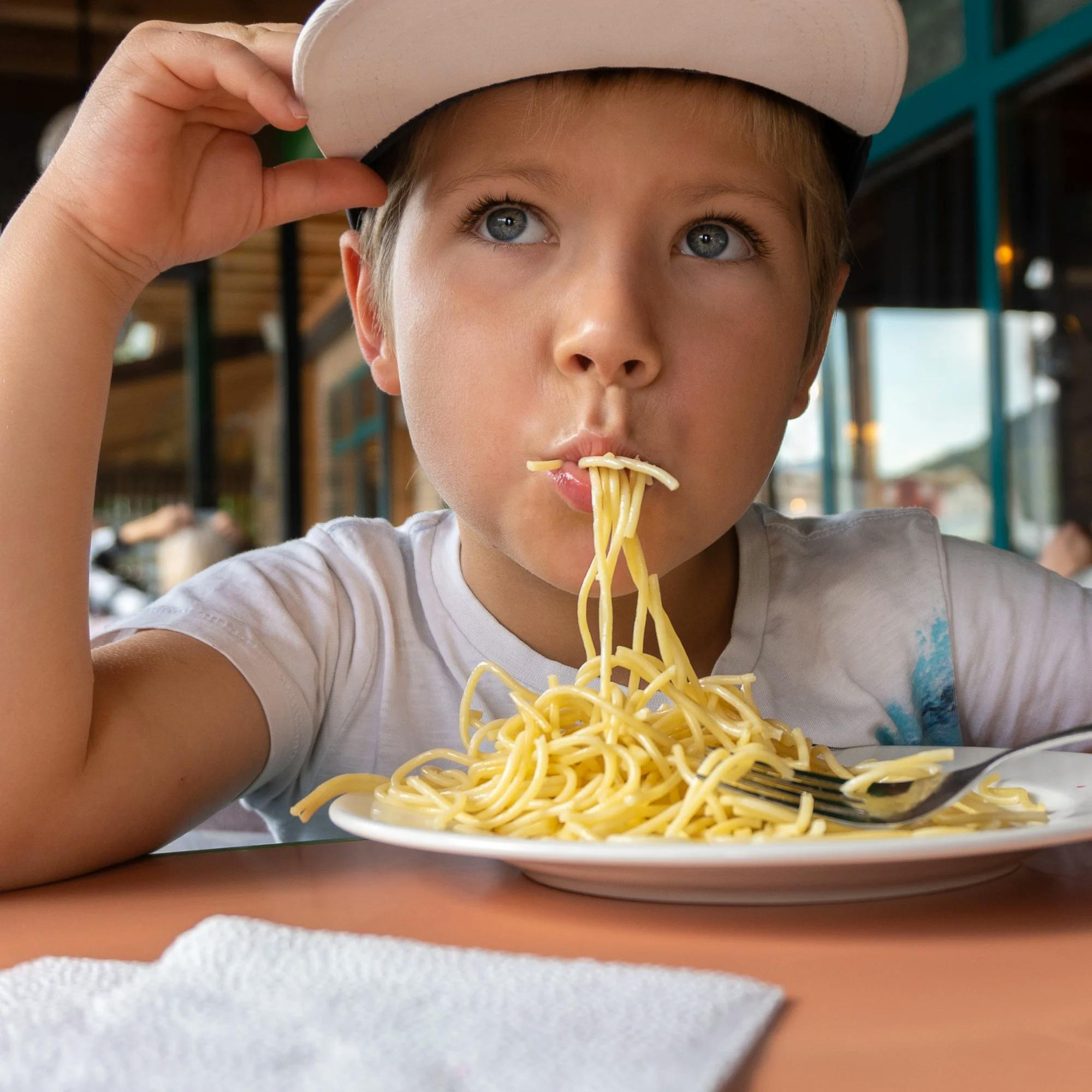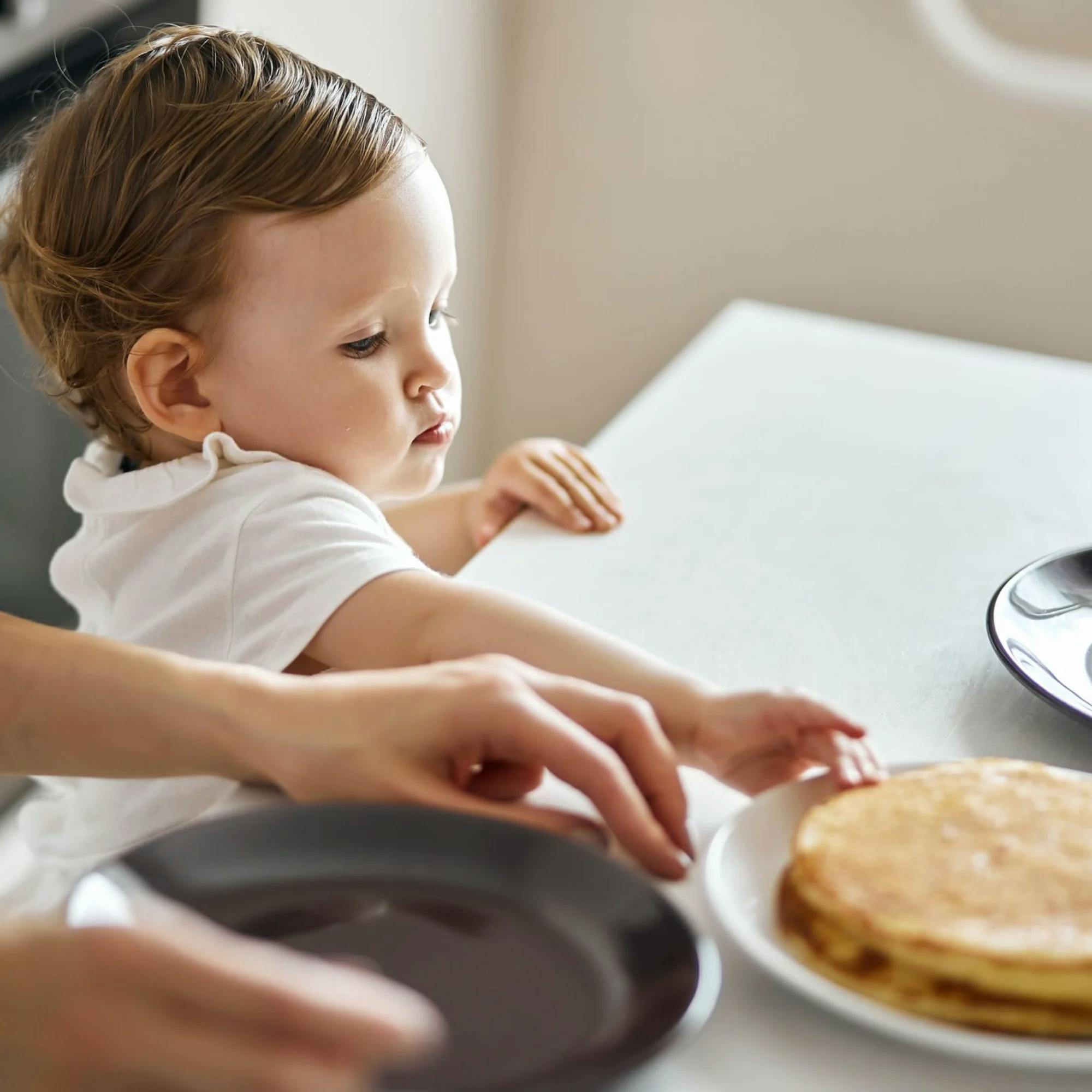
How to Respond When Your Toddler Tells You “No!”
 Abby Barnes, M.S., CCC-SLP
Abby Barnes, M.S., CCC-SLP
It can feel downright magical when your toddler begins to talk. But what about when their favorite word is “no”? If you have a little one at home, that’s a word you probably hear often–maybe more often than you’d prefer!
If you think your child overuses this word, you’re not alone. Many parents and caregivers may feel a little surprised or even worried when their young child starts telling them “no.” It may be frustrating, but rest assured that it’s a normal part of childhood development. And believe it or not, there are some benefits to your toddler’s newfound independence.
Why do children say “no”?
Using the word “no” is referred to as a “protest.” This is a child’s way–and even our way as adults–to tell others to stop, or to express that we don’t like what’s happening.
The “no” phase typically starts around 2 years old, sometimes even earlier. This is when most children’s vocabulary has really taken off, as well as their independence. And the word “no,” at least in their mind, helps give them the control they’re craving.
Children at this age are growing physically and mentally. They are learning how to be a separate person, apart from their parents, and they’re bound to seek out anything that will make them feel more independent.
The “no” phase typically starts around 2 years old. This is when most children’s vocabulary has really taken off, as well as their independence.
With toddlers, you are likely to hear “no!” when asking them a question–such as if they want a certain snack or to play a specific game. They may also respond with “no!” after you tell them to do something.
One thing to keep in mind: Especially with very young kids, they may not yet totally understand the difference between “yes” and “no.” They’ve probably realized that loudly saying “no!” gets more of a reaction than “yes” does. So if your child seems to be saying “no” to every question asked, try assessing whether they understand these two words.

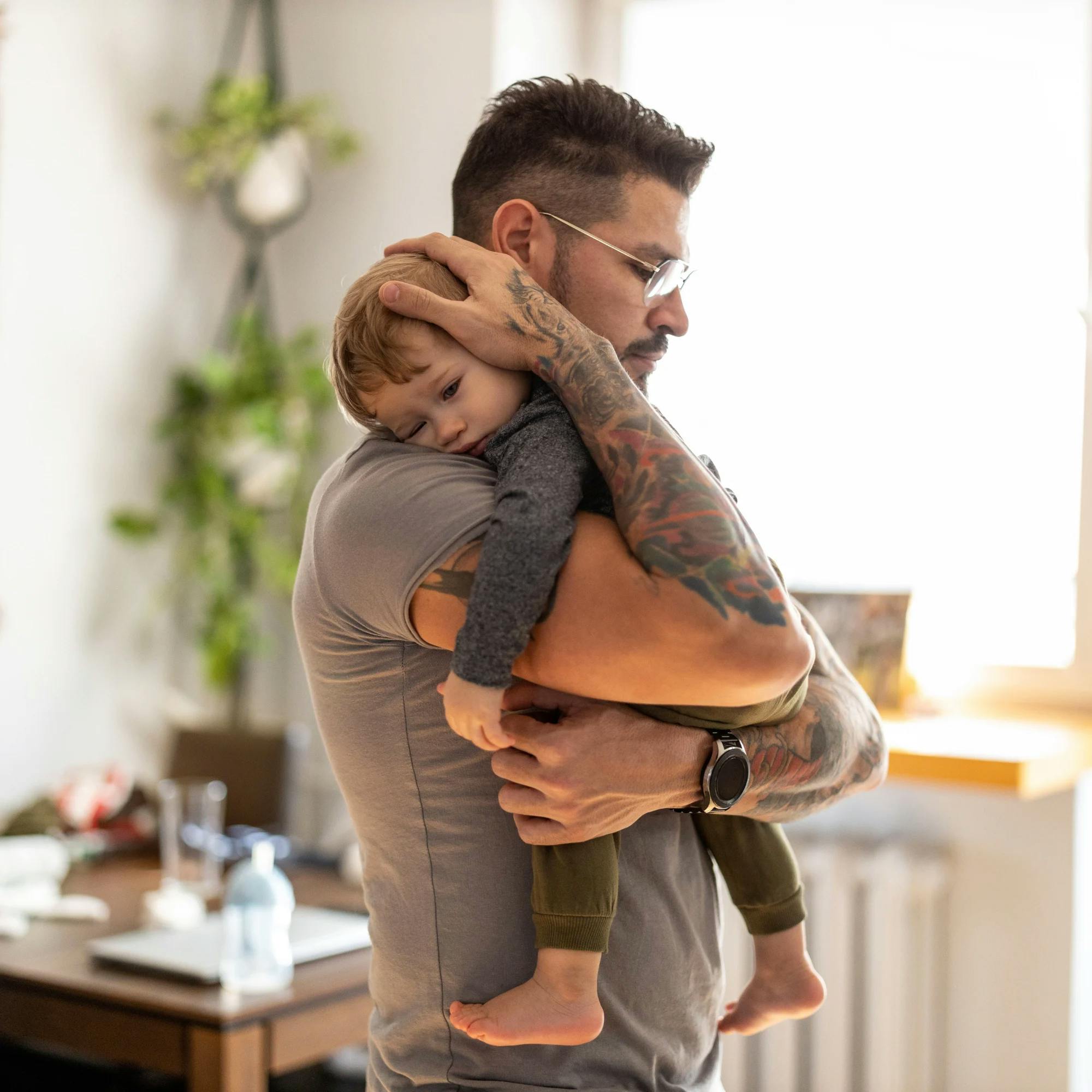
How to tell if your child knows the difference between “yes” and “no”
Grab some objects or pictures you know your toddler understands well. Let’s say you pick up their teddy bear. Ask them, “Is this your teddy bear?” and see how they respond. For kids who don’t yet understand “yes” and “no,” you’re likely to get some incorrect answers.
You can also watch for this when you offer your child something you know they’d really like. Maybe it’s a special treat they don’t get often, like a delicious cookie. Ask them, “Do you want a cookie?” If they say “no” but then become upset after you don’t give it to them, this is a sign that they may not yet understand how to use “yes” and “no” correctly.

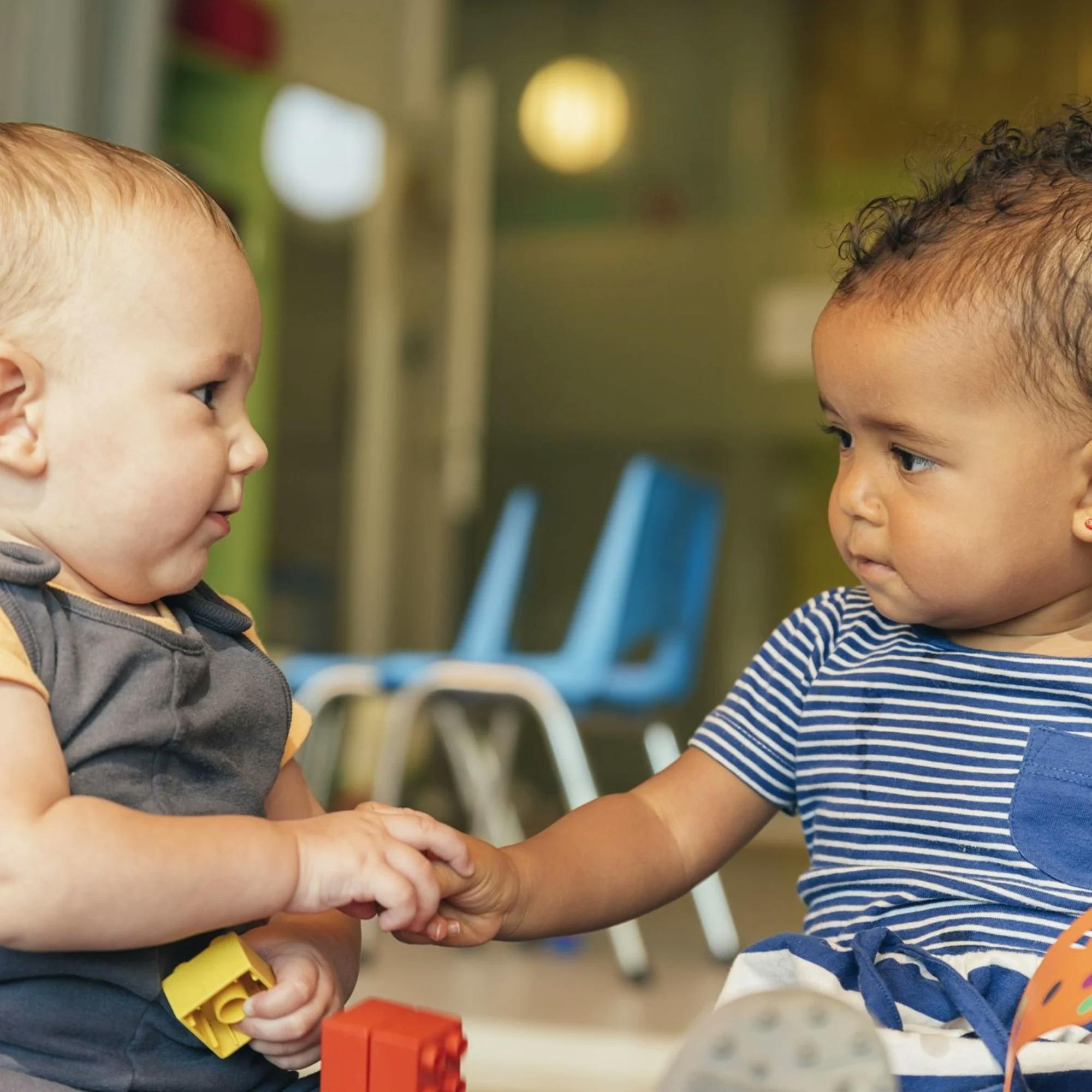
Is the “no” stage a bad thing?
Some of you are likely thinking, “My child definitely understands the difference between ‘yes’ and ‘no,’ but they’re still using ‘no’ all the time.” This is the case for many kids! But believe it or not, the stage of the constant “no!” isn’t always a bad thing.
Of course, if you’re reading this after a long day with an uncooperative toddler, you may not be inclined to agree. But think about it: As parents and caregivers, we want our kids to grow into confident adults. And the “practice” for this starts in childhood, when toddlers begin to see themselves as a separate person from their caregivers.
Learning how to say no is important for several reasons. It’s extremely important from a safety perspective. If someone ever approaches your child in an unsafe way, you want your child to be able to yell “no!” and run away.
But there are other situations to consider, too. As your child grows older, they’ll need to learn how to tell someone “no” politely. We want our children to be able to speak their mind and not feel obligated to please everyone.
So the next time “no” is on repeat in your house, try to think of the positive results coming down the road!

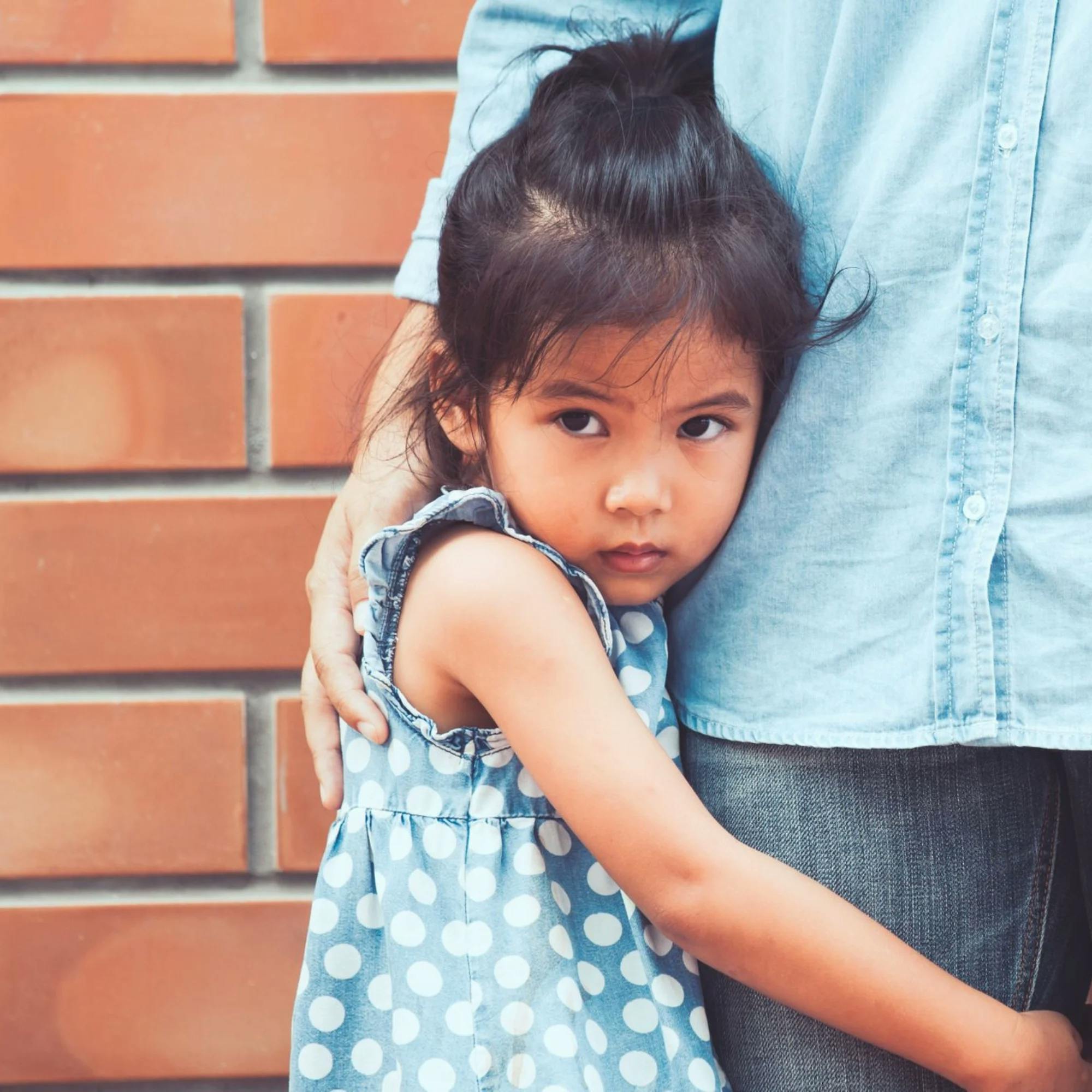
What to do when your toddler says “no!”
What if the refusals are getting excessive, or your toddler is having frequent meltdowns? Here are some things you can do to make the day a little easier for everyone in the family.
Give your child choices instead of asking a “yes or no” question. Remove the option to say “no” altogether! Instead of “Do you want to put on your shoes?,” you can say, “It’s time to put on your shoes. Do you want your red shoes or your blue shoes?” Giving your child frequent choices helps them feel more independent and in control, and it cuts down on their frustration.
Keep in mind, too, that many things your child has to do aren’t optional. Shoes are a requirement before you leave for the store! That’s another reason to not even ask the question. Giving choices will get you much further in these situations.

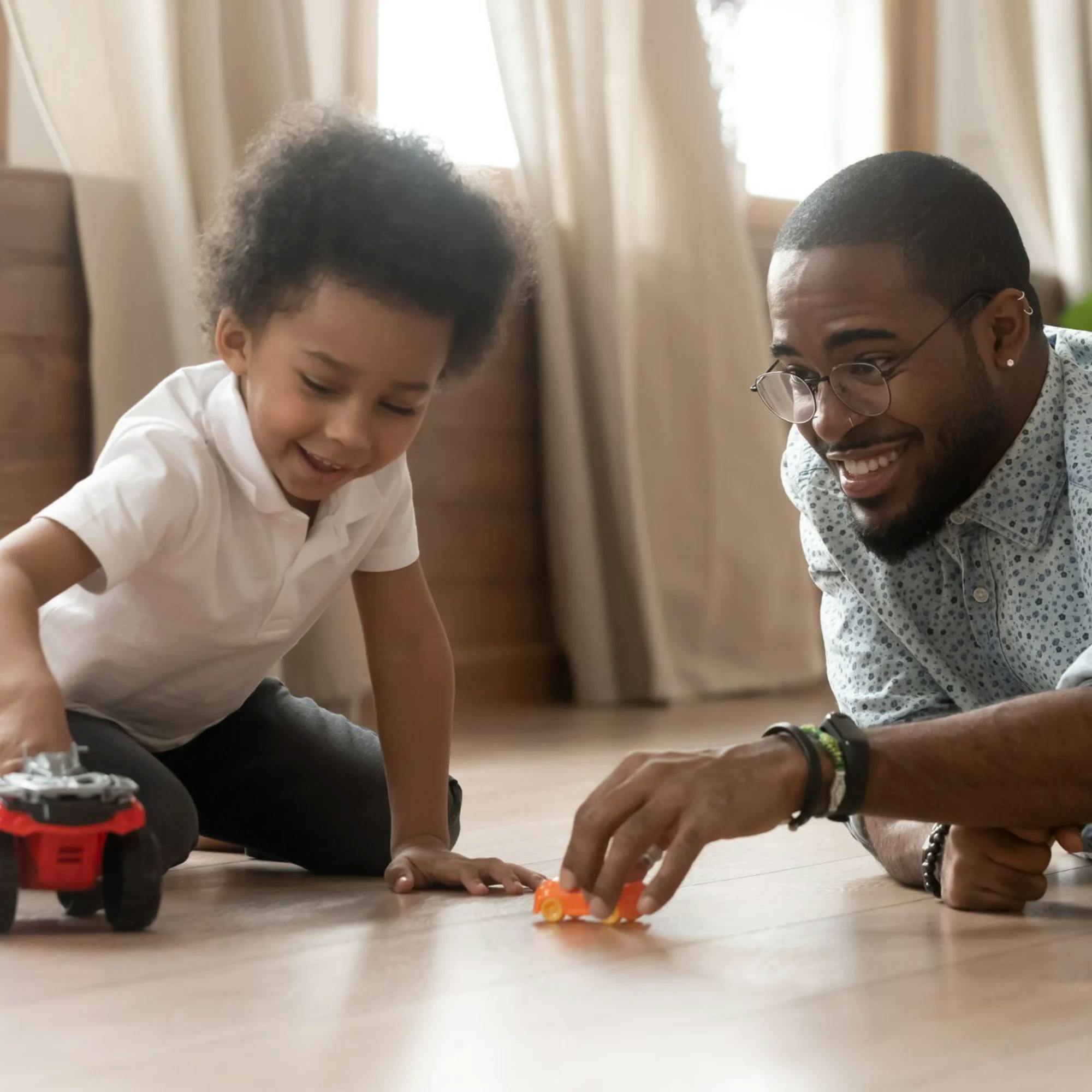
Tell your child what they should do instead of what not to do. Instead of saying, “We’re not having dessert right now,” try, “We’re having dessert after dinner.” Speaking more positively, and saying “no” to your child less often, may be helpful. Of course, there are times when you have to say “no.” But limiting this by changing your phrasing when possible can go a long way!
Keep a consistent routine. Little ones thrive on routine. When they know what’s coming, they may have fewer tantrums or emotional moments. Say your child is upset because they want to play outside, but you aren’t able to take them right now. Set up a schedule where your child plays outside at roughly the same time each day: maybe in the morning, or after lunch or dinner. They’ll know this is coming and will be less likely to beg to go outside at other times.
Of course, we can’t schedule every hour of every day, especially with the unpredictable nature of little kids! But having a general routine–or even just a routine for certain times of day when you often get some pushback from your child–can be a big help.
Parenting toddlers is hard work, especially through this stage. But stay consistent, and stay positive. You and your child will make it through together!
How Expressable Can Help
Concerned your child isn't reaching age-expected milestones? Looking for communication support from a professional? Expressable is a national online speech therapy practice serving children and adults. We treat all major areas of communication and feeding, offer flexible hours including evenings and weekends, and accept most major health insurance plans. We’re proud to have earned more than 3,000 5-star reviews from our clients (4.9/5 average).
Our therapy model is centered on parent and caregiver involvement. Research proves that empowering caregivers to participate in their loved one’s therapy leads to better outcomes. That’s why we combine live, 1-on-1 speech therapy with personalized education and home practice activities for faster progress.
Communication is more than words. It’s how we share how we feel and show who we are. We’re here to help you or your child do just that.
